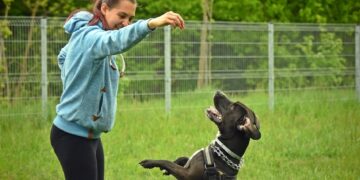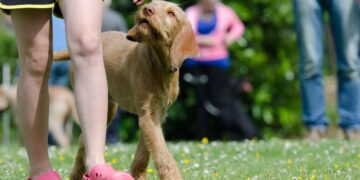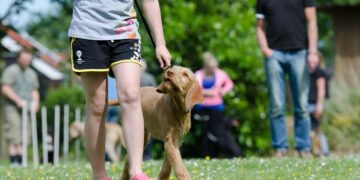How to Address Aggressive Dogs Through Effective Behavior Training
Dogs are not just pets; they are family members. When they display signs of aggression, it can be unsettling. Understanding the root causes of aggressive behavior and applying effective training principles can transform a challenging situation into a rewarding one. This guide outlines a structured approach to managing aggressive dogs, ensuring safety, and promoting positive behavior changes.
Understanding Dog Aggression
Aggression in dogs manifests in various forms and is prompted by numerous triggers. Recognizing these can be key to addressing the behavior thoughtfully and effectively.
Types of Aggression
- Fear-based Aggression: This occurs when a dog feels trapped or threatened and thinks aggression is its only escape.
- Protective Aggression: Often seen in dogs who believe their owner or a pack member is under threat.
- Possessive Aggression: This type of aggression is displayed when a dog is guarding food, toys, or another resource.
- Redirected Aggression: This happens when a dog cannot attack the source of its frustration and instead lashes out at someone else.
Identifying Triggers
Subtle body language and environmental factors can provoke aggressive responses. Signs to watch for include tensed body, furrowed brows, stiff tail, and ears pinned back. Common triggers include territorial invasions, unfamiliar animals, loud noises, or even specific grooming practices.
Strategies for Managing and Training Aggressive Dogs
Effectively resolving canine aggression revolves around comprehensive training strategies coupled with consistent management practices. Here are steps to guide you through this process:
Initial Safety Measures
Ensure the safety of all involved by taking necessary precautions such as using a leash in public areas, introducing a muzzle during training, and creating a safe space at home where the dog can retreat when overwhelmed.
Seek Professional Help
Dealing with aggressive behavior can often require the intervention of a professional. Certified animal behaviorists or experienced trainers can offer invaluable help by customizing training techniques and strategies specific to your dog’s needs.
Behavior Modification Techniques
Here are some effective training techniques that can help modify aggressive behavior:
- Desensitization: Gradually and gently expose the dog to the source of its fear under controlled circumstances, while associating the fear-inducing trigger with something positive like treats or affection.
- Counter-Conditioning: Changing the dog’s emotional response to the trigger from negative to positive. This is done by pairing the trigger with a reward until the dog’s attitude changes.
- Positive Reinforcement: Focus on rewarding the dog for non-aggressive behavior, which encourages good behavior patterns through positive feedback.
Establish Leadership
Dogs are pack animals by nature, and they respect an alpha. By establishing yourself calmly and assertively as the pack leader, you reinforce a structure that discourages aggressive behavior. Ensure you lead through guidance and consistent rule-setting rather than intimidation or fear.
Practical Tips for Everyday Situations
Integrating specific, everyday practices can solidify training and manage aggression effectively.
Exercise Your Dog Regularly
Exercise is crucial as it helps burn off excess energy that might otherwise be directed towards aggressive behavior. Regular walks, play sessions, and even training exercises can provide excellent outlets for energy and stress reduction.
Monitor and Adjust Your Dog’s Diet
What a dog eats can influence its behavior. Consult with a vet to ensure your dog’s diet is fulfilling its nutritional needs without contributing to excessive energy and possible aggression.
Respond Appropriately to Aggression
When aggressive behavior does occur, it’s important to respond promptly and appropriately. Avoid yelling or physical punishment, as these reactions can increase anxiety and aggression. Calmly remove your dog from the situation, and give it time to cool down.
Conclusion
Addressing aggressive behavior in dogs is challenging but immensely rewarding when done correctly. Understanding aggression, applying effective training methods, and incorporating practical daily practices can turn a difficult situation into a successful behavior modification journey. Remember, patience, consistency, and the willingness to seek professional help when necessary are crucial components of your success in making your dog a calmer and happier family member.














































